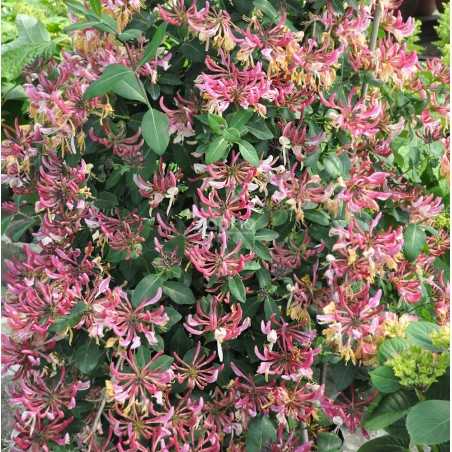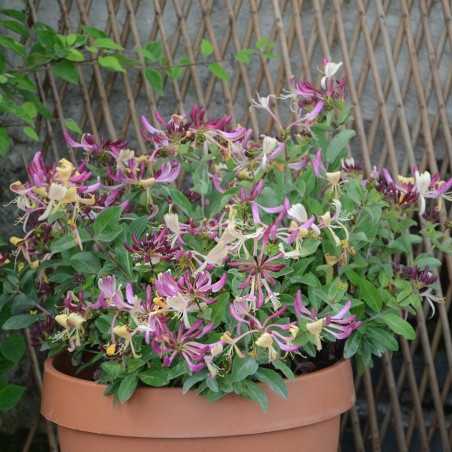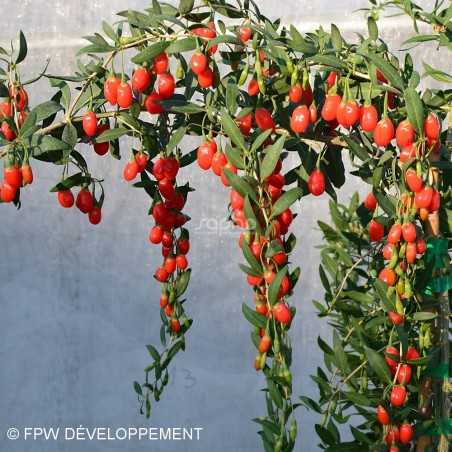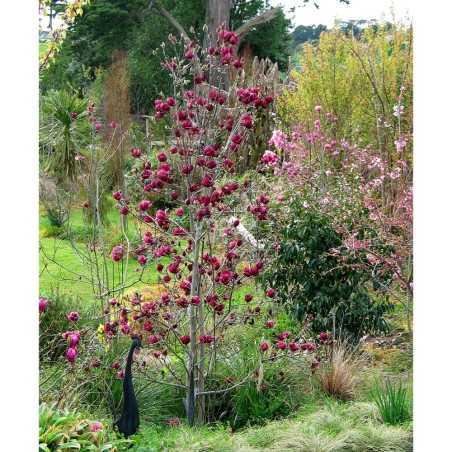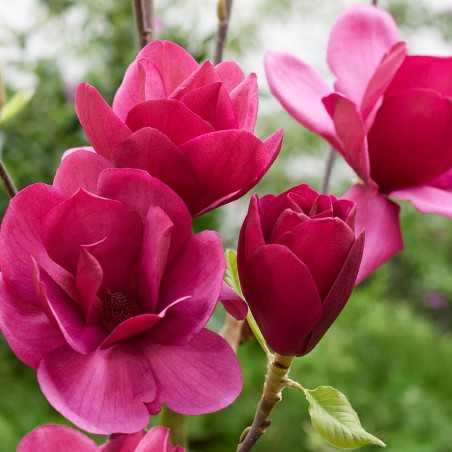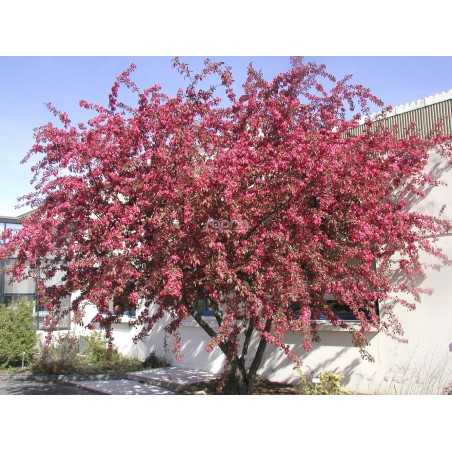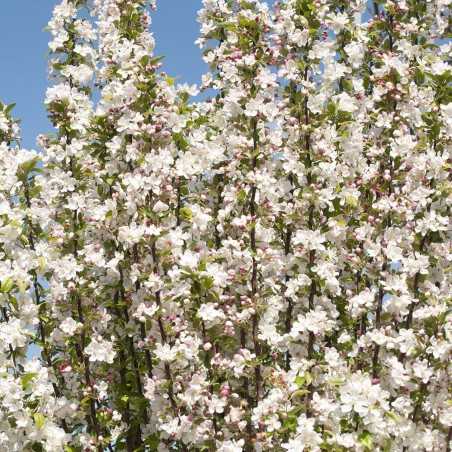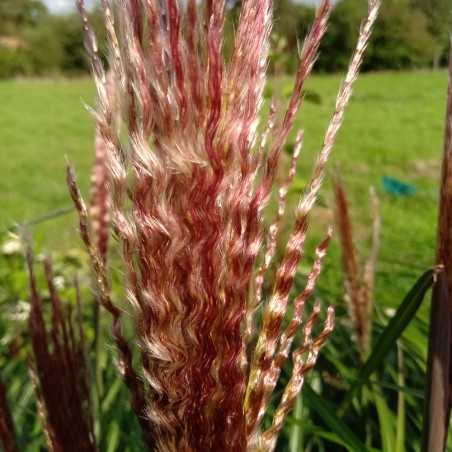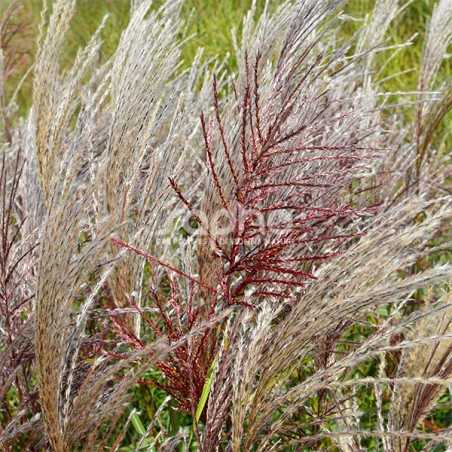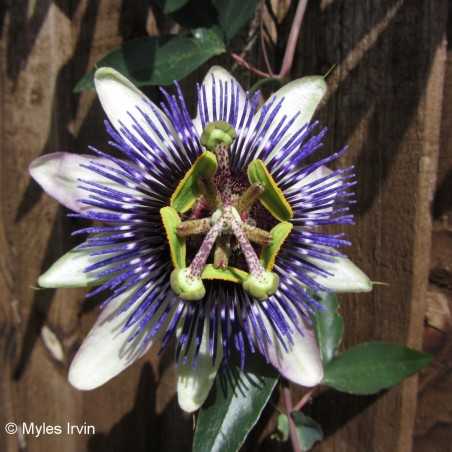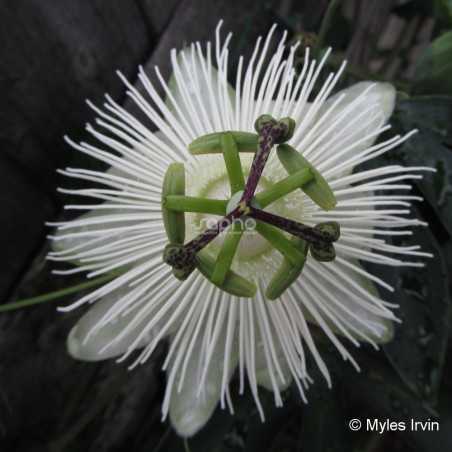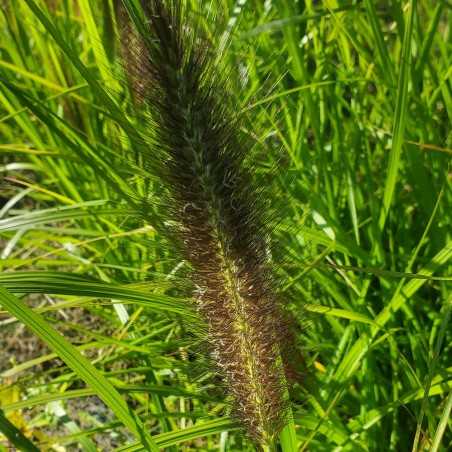Imperial honeysuckle : an avalanche of beautiful red, fragrant flowers.
This selection of climbing honeysuckle of the CAPRILIA ® range derives from the Lonicera periclymenum 'Florida'. Its growth is medium.From mid June to July this flower bearing variety is particularly remarkable due to its big florets over the entire height of the plant. The fragrant flowers are carmine red in the bud stage, getting lighter on opening, turning cream, then yellow before wilting, producing a beautiful contrast.The dark green foliage shows off the flowers to their advantage. It is resistant to black spot, mildew and aphids.To be trained.
Filter By
Foliage
Position
Categories
Menu
All our varieties
The CHIC of its perfumed flowers and the CHOC of its small silhouette!The "CHIC" : in June, the plant gets covered with very refined flower heads; the purple to deep pink tones of the buds are harmoniously emphasized by the pinkish white and then orangy yellow of the blossomed tubular flowers. This delicately scented cultivation is very floriferous and extends its flowering into September, in good conditions.The "CHOC" : this honeysuckle is surprising due to its dense and reduced growth.The opposite leaves with purple brown petioles have a greeny-blue colour. The shrub is semi-evergreen to evergreen, under temperate conditions.CHIC & CHOC® can be used in pots or planted in the garden.
A real innovation from French genetics : An easy maintenance goji with sugary sweet berriesPRINCESS TAO® is an exclusively French genetic goji variety, the outcome of the breeding work by FPW DEVELOPPEMENT.The discrete light violet flowering starts at the end of May. It continues in successive waves right through into September, finally reaching the tips of its branches. The fruits form rapidly and simultaneously. When ripe, the berries are beautifully bright red and shiny. The picking from July onwards is easy as the berries are bigger than those of the currently available market varieties. The fruits are sweet, not astringent and can be eaten fresh or dried. Under good conditions the fruit production continues right into November.From the first year of planting, a small quantity of fruit can already be picked.The naturally layered growth makes staking necessary. Thanks to the sweet taste of its fresh berries and needing only little water, as well as being mildew resistant, PRINCESS TAO® links delicacy and easy maintenance.
A compact magnolia, with beautiful bright purple tulips.
'Genie' a cross between M. soulangeana and M. lilliflora 'Nigra', has all the qualities of a good hybrid.Right from the beginning, it is very floriferous, and before the leaves appear, it has very big, stable, bright purple, tulip shaped flowers. They are lightly scented, long-lasting, and can resist temperatures of down to -3°C. In good conditions, a second flowering can bloom in summer.Dense and upright growth, good branching, moderate dimensions (at 10 years of age 3 m high and 1.50 m wide) : an asset, planted in small areas, grows as shrub or tree.
Trophies:
An imperial blooming from an early age
Selected by Vance Hooper, who is the breeder of the fabulous Magnolia ‘GENIE’
Superb flowers over 20 cm large, dark red-pink, lightly scented
Blooms from April with summer reblooming
Flowers abundantly, even on young plants
Moderate-sized tree, perfect for gardens or streets and squares
An ornamental apple tree for the town or the country.This tree is of semi-spreading shape, reaching a height of 3 to 4meters in ten years and has a harmonious form, which it keeps without the necessity of pruning. Its leaves and branches are purple.The violet-pink flowers blossom in April - May along the whole length of the branches, and the purple fruits appear in autumn.COCCINELLA® has also been chosen by the INRAE selectors for its resistance to the major diseases such as fire blight, scab and mildew.Grown to a full standard, COCCINELLA® has the asset of a small town tree; grown in clumps, its foliage and fruit are appreciated in mixed countryside hedges or in shrub borders.
Naturally a STAR since its creation.
This tree is of semi-spreading growth, reaching a height of 3 to 4m in ten years and has a harmonious shape, which it keeps without the necessity of pruning. Its foliage is green.
In April, 'Evereste' covers itself in bright pink flower buds, which bloom as pure white bouquets of flowers. The quality and the abundance of its pollen make it an ideal pollinator, precious for fruit growers (in proportion of 6 - 8% of all varieties of early or semi-early flowering).
The cherry sized fruits are orange with thin red stripes. They apprear in autumn and have the particularity to last well into winter.
'Evereste' has also been chosen by the INRAE selectors for its resistance to the major diseases such as fire blight, scab and mildew.
Nearly a million plants have been sold in Europe since its creation in 1974.
Its ornamental qualities, its reasonable dimensions and its easy care make it an excellent small urban tree if grown full standard; in clumps it is very valuable in the composition of flowering hedges and in shrub borders.
A flamboyant Miscanthus in late summer
This grass has red flowers with pink highlights, appearing in summer and providing a superb contrast to its dark green foliage with silvery-white stripes.
In autumn, the colors of the stems and foliage change to reddish tones.
It's a strong, vigorous plant, with dense branching from an early age.
It can be used as an isolated plant, in a bed or as a plant screen.
A beautiful red autumn colour that lasts until the coldest weather
This grass has a red spike-like bloom that appears in summer, contrasting with its green, white-ribbed foliage.
In autumn, the foliage and stems take on an intense, long-lasting reddish hue.
Miscanthus can be used in the ground, as an isolated plant, in a bed or as a plant screen.
Walls, trellises and pots : big decorative flowers from May to the frosts
Vigorous and spectacularly climbing, this polyploid hybrid attaches itself thanks to its tendrils.
Evergreen in mild winter regions, semi evergreen in colder areas, it must be protected at temperatures of under -8°C.
The leathery foliage, made up of 3 to 5 lobes with pronounced veins, is shiny and of an attractive dark green.
From May until the frosts several flowers appear daily. They can reach 13 cm in diameter, have a white corolla with shades of lilac and the filament crowns are beautifully dark violet purple and blue. The scented flowers last several days.
Fruits are rare.
Very decorative during the whole summer, RIVERSIDE® 'Damsel's Delight' covers walls and trellises and can also be pot-grown.
Walls, trellises and pots : a graphic passion flower from May to the frosts
Vigorous and spectacularly climbing, this polyploid hybrid attaches itself thanks to its tendrils.
Evergreen in mild winter regions, semi evergreen in colder areas, it must be protected during temperatures of under -8°C.
The large foliage, formed of 3 to 5 lobes with pronounced veins, is shiny and of an attractive dark green.
From May until the frosts several flowers appear daily. They can reach 12 cm in diameter and surprise us with their pure white petals, sepals and filament crowns. The 5 green stamens and the 3 dark stigmata stand out well from the white. The scented flowers last several days. They are followed by decorative, non-edible yellow-orange fruits of about 6 cm.
Very decorative and graphic during the whole summer, RIVERSIDE® 'Snow Queen' decorates walls and trellises and can also be grown in pots.
Charming black panicles contrasting with a green foliage
This variety of pennisetum has large, red-tinged spikes that turn purple-black.
The spikes appear abundantly, covering the entire plant from summer to late autumn.
It forms a rounded clump with narrow, glossy green foliage.
Use in beds, in association with other perennials or shrubs.

